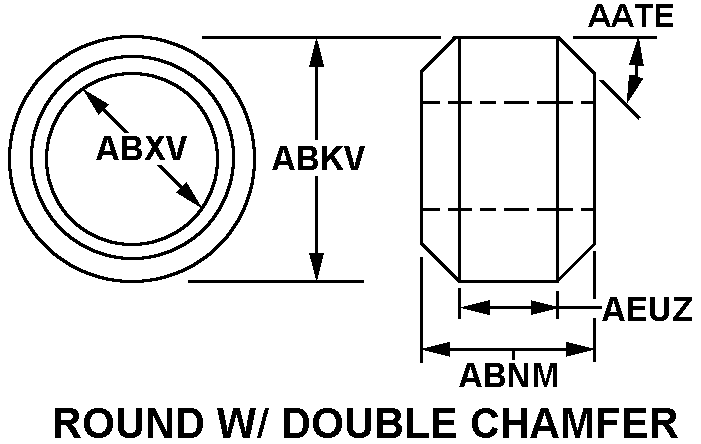3040003566892
Price Quote Get an up to date pricing and availability quote for this product. Order online or over the phone.
Quality Commitment
Serving our customers with quality and safety first.
- AS9120 Certified
- Audited supply chain
- ITAR Registered
- DDTC Registered
- HAZMAT Certified
- Customer service objectives
- Every product 100% inspected

3040-00-356-6892 Specification Set by the OEM (see RNCC code 3)
45.0
0.500in.
0.437in. ⁓7/16"
0.2510in.
2
90.0
all holes unc
threaded all holes
0.164in. all holes
64 microinches opposite bearing flat
steel, fed std 66, aisi B1113, 1213/sae 1113
steel comp 1213
fed std 66 fed std single material response or aisi 1113 assn std single material response or sae 1113 assn std single material response
round w/double chamfer
Cross Reference Parts Part numbers that meet the specification outlined on this page and set by the OEM
Identification Item Identification Guide (IIG) and Item Name Code (INC)

Definition Definition of approved item name (AIN): "COLLAR,SHAFT"
An item designed to be mounted around a shaft to limit axial movement of the shaft and/or its assembled parts. It is secured directly to the shaft by use of a setscrew(s), pin(s), or the like, which may be a part of the item of supply. A pilot hole drilled in or through the wall(s) for drilling and pinning at application may be considered a method of securing. Solid items have a bearing surface on one or both end(s) perpendicular to the axis. For items designed to be mounted around the extended hub portion of a mounted item on a shaft or clamp around a shaft, see clamp, hub. See also bearing, sleeve; bushing, sleeve; spacer, sleeve; and coupling, shaft, rigid.
3040-00-356-6892 Material Hazmat, Precious Metals, Criticality, Enviroment, and ESD
Indicates there is no data in the hmirs and the nsn is in a fsc not generally suspected of containing hazardous materials.
Precious metal content is unknown
The item does not have a nuclear hardened feature or any other critical feature such as tolerance, fit restriction or application.
Identification Codes
HMIC: Hazardous Material Indicator Code. A one position code that identifies a hazardous item.
PMIC: Precious Metal Indicator Code. A one position code which identifies items that have precious metals as part of their content. precious metals are those metals generally considered to be uncommon, highly valuable, and relatively superior in certain properties such as resistance to corrosion and electrical conductivity.
ESD: Electrostatic Discharge. Indicates if an item is susceptible to electrostatic discharge or electromagnetic interference damage. electrostatic discharge damage occurs when an accumulation of static electricity generated by the relative motion or separation of materials is released to another item by direct contact. electromagnetic interference damage occurs when an item comes into proximity with an electrostatic or magnetic field.
ENAC: Enviromental Attribute Code. Identifies items with environmentally preferred characteristics.
CRITL: Criticality Indicator Code. Indicates an item is technically critical by tolerance, fit, application, nuclear hardness properties, or other characteristics.






